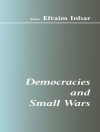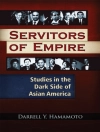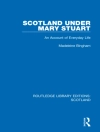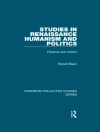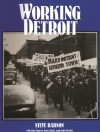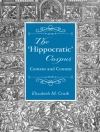Choice Outstanding Title
That New England might invade Virginia is inconceivable today. But interstate rivalries and the possibility of intersectional war loomed large in the thinking of the Framers who convened in Philadelphia in 1787 to put on paper the ideas that would bind the federal union together. At the end of the Constitutional Convention, Benjamin Franklin rejoiced that the document would “astonish our enemies, who are waiting to hear with confidence . . . that our States are on the point of separation, only to meet hereafter for the purpose of cutting one another’s throats.” Usually dismissed as hyperbole, this and similar remarks by other Founders help us to understand the core concerns that shaped their conception of the Union. By reexamining the creation of the federal system of the United States from a perspective that yokes diplomacy with constitutionalism, Hendrickson’s study, according to Karl Walling, “introduces a new way to think about what is familiar to us.”
This ground breaking book, then, takes a fresh look at the formative years of American constitutionalism and diplomacy. It tells the story of how thirteen colonies became independent states and found themselves grappling with the classic problems of international cooperation, and it explores the intellectual milieu within which that problem was considered. The founding generation, Hendrickson argues, developed a sophisticated science of international politics relevant both to the construction of their own union and to the foreign relations of “the several states in the union of the empire.” The centrality of this discourse, he contends, must severely qualify conventional depictions of early American political thought as simply “liberal” or “republican.”
Hendrickson also takes issue with conventional accounts of early American foreign policy as “unilateralist” or “isolationist” and insists that the founding generation belonged to and made distinguished contributions to the constitutional tradition in diplomacy, the antecedent of twentieth-century internationalism. He describes an American system of states riven by deep sectional animosities and powerful loyalties to colonies and states (often themselves described as “nations”) and explains why in such a milieu the creation of a durable union often appeared to be a quixotic enterprise. The book culminates in a consideration of the making of the federal Constitution, here styled as a peace pact or experiment in international cooperation.
Peace Pact is an important book that promises to revolutionize our understanding of the era of revolution and constitution-making. Written in a lucid and accessible style, the book is an excellent introduction to the American founding and its larger significance in American and world history.
Inhoudsopgave
Preface and Acknowledgments
Part One: Introduction
1. To Philadelphia
2. The Great Debate of 1788
3. The Unionist Paradigm
4. An Experiment in International Cooperation
Part Two: The Lessons of History
5. An Age of Inquiry
6. Greece and Rome
7. Universal Monarchy and the Balance of Power: The View from the Eighteenth Century
8. Republiques Federative and Machiavellian Moments
9. The British Setting: Continental Connections and the Balanced Constitution
Part Three: The British Empire and the American Revolution
10. From War to War
11. Constitutional Crisis
12. Burden-Sharing & Representation
13. Plans of Union and the Imperial Predicament
14. “The Great Serbonian Bog”
15. Rights and Wrongs, Prophets and Seers
16. Independence and the Union
Part Four: Articles of Confederation and Perpetual Union
17. Problematics of Union
18. The “Dickinson Plan”
19. Deadlock and Compromise
20. The Basis of Congressional Authority
Part Five: A Foreign Policy of Independence
21. Foundations of the New Diplomacy
22. States, Sections, and Foreign Policy
23. The Armistice of 1783
Part Six: Peace Pact: The Writing and Ratification of the Constitution
24. Vices of the Critical Period
25. To the Great Compromise
26. Commerce, Slavery, and Machiavellian Moment
27. Sovereignty in “A Feudal System of Republics”
28. Federals and Anti-Federals
29. Conclusion
A Note on Capitalization, Style, and Bibliography
Appendix. The Argument Diagramed
Figure 1. Associations of States: Comparataive State Systems and Empires
Figure 2. Constitutional Interpretation: Varieties of Federal Union, 1763-1787
Figure 3. American Political Thought: The Unionist Paradigm, c. 1776
Figure 4. Theories of American Politics
Figure 5. American Diplomacy and Theories of International Relations
Figure 6. Objectives, Doctrines, and Principles of Early American Diplomacy
Figure 7. General Map of Interpretation
The Constitution in History: Bibliographical Essay
List of Short Titles
Notes
Index
Over de auteur
David C. Hendrickson is professor of political science at Colorado College in Colorado Springs. He is the coauthor of Empire of Liberty: The Statecraft of Thomas Jefferson and The Fall of the First British Empire: Origins of the War of American Independence.


